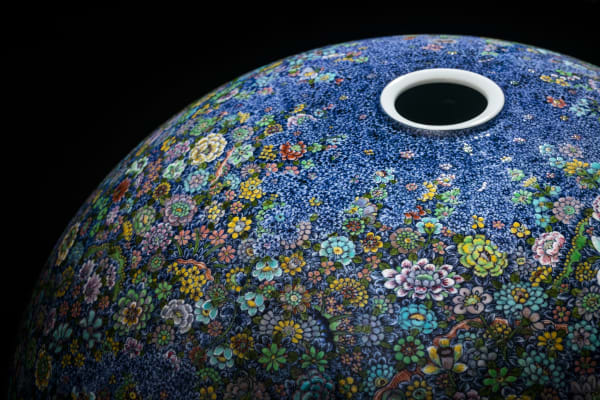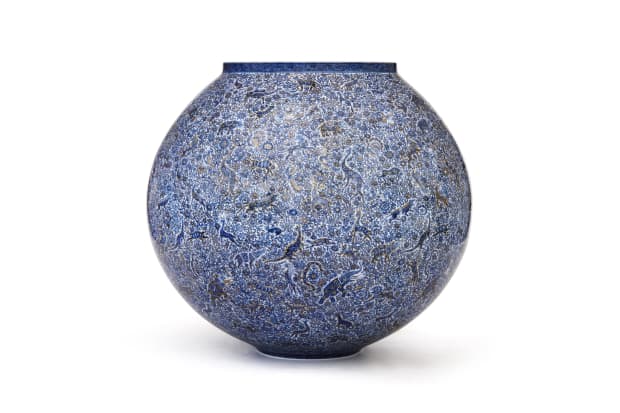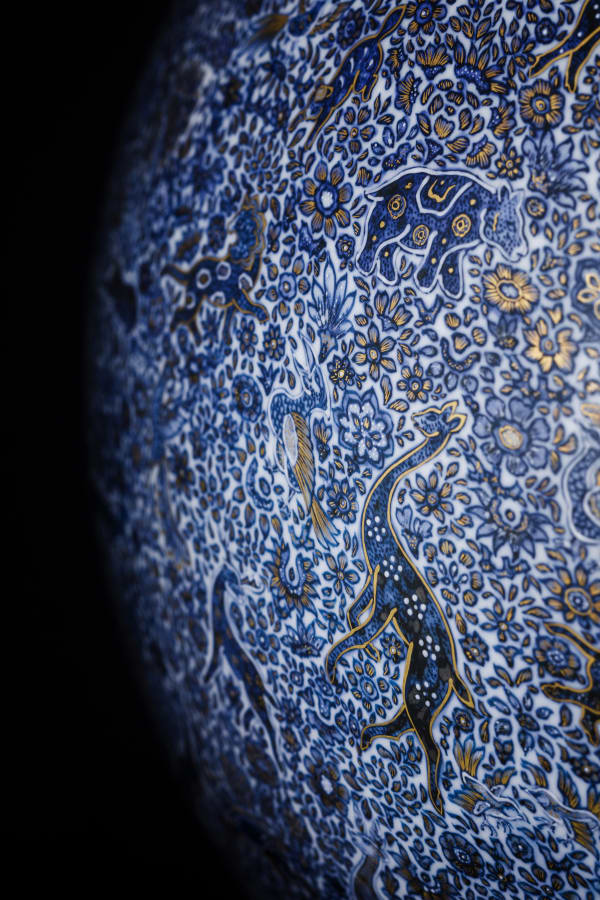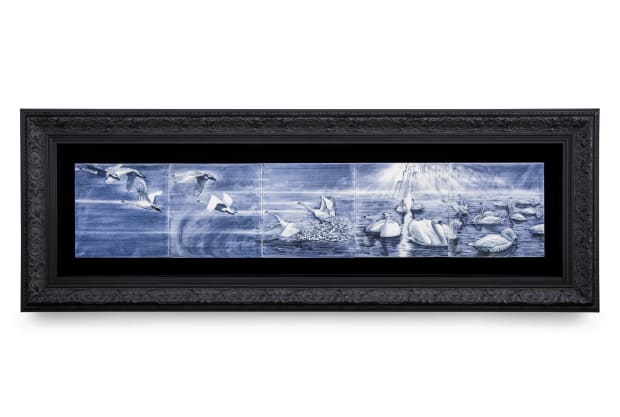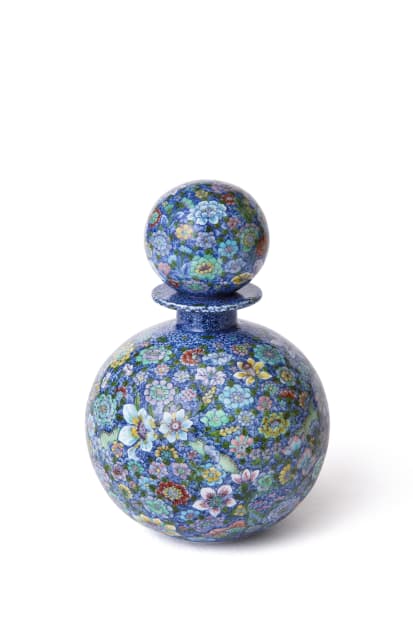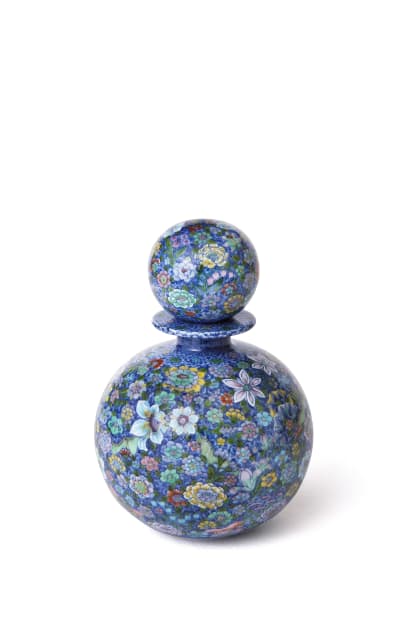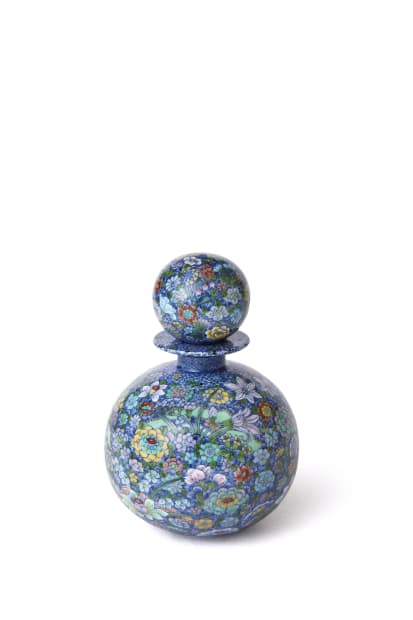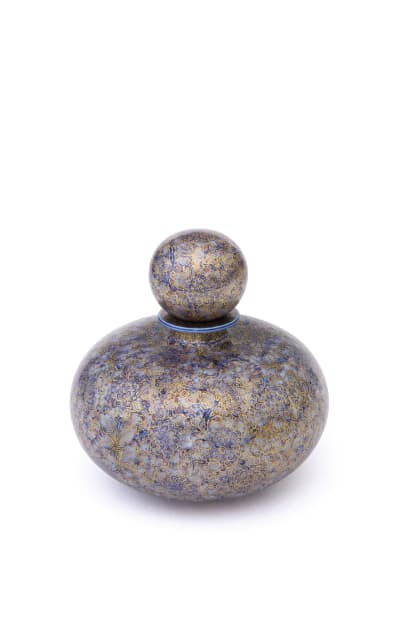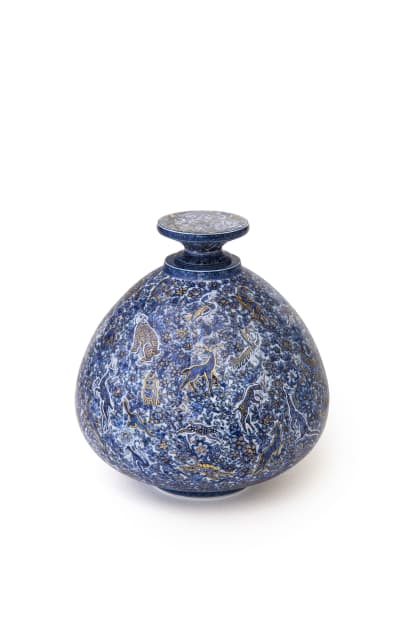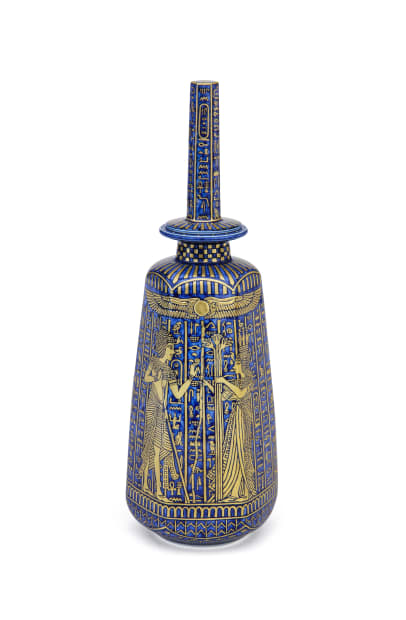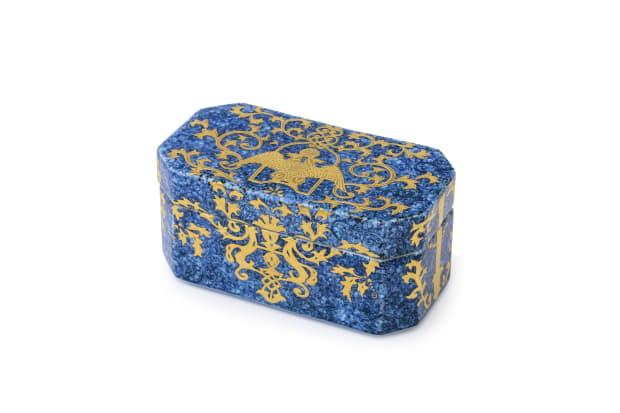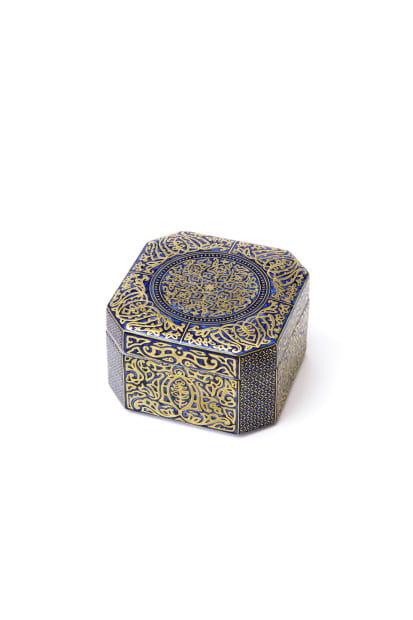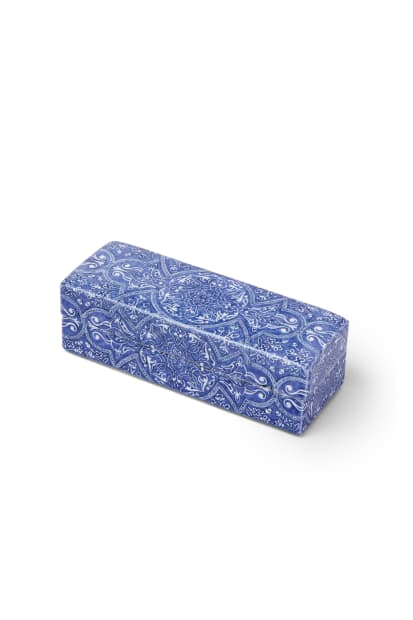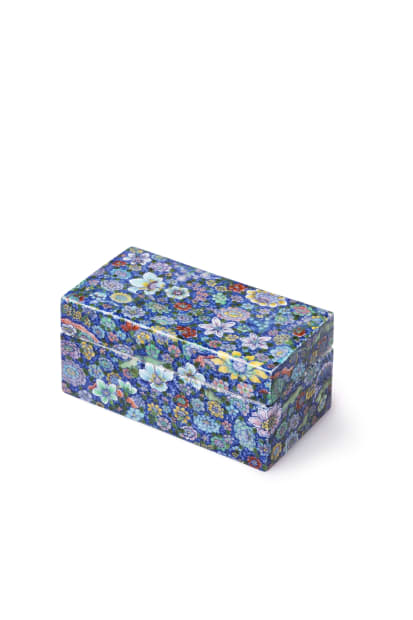-
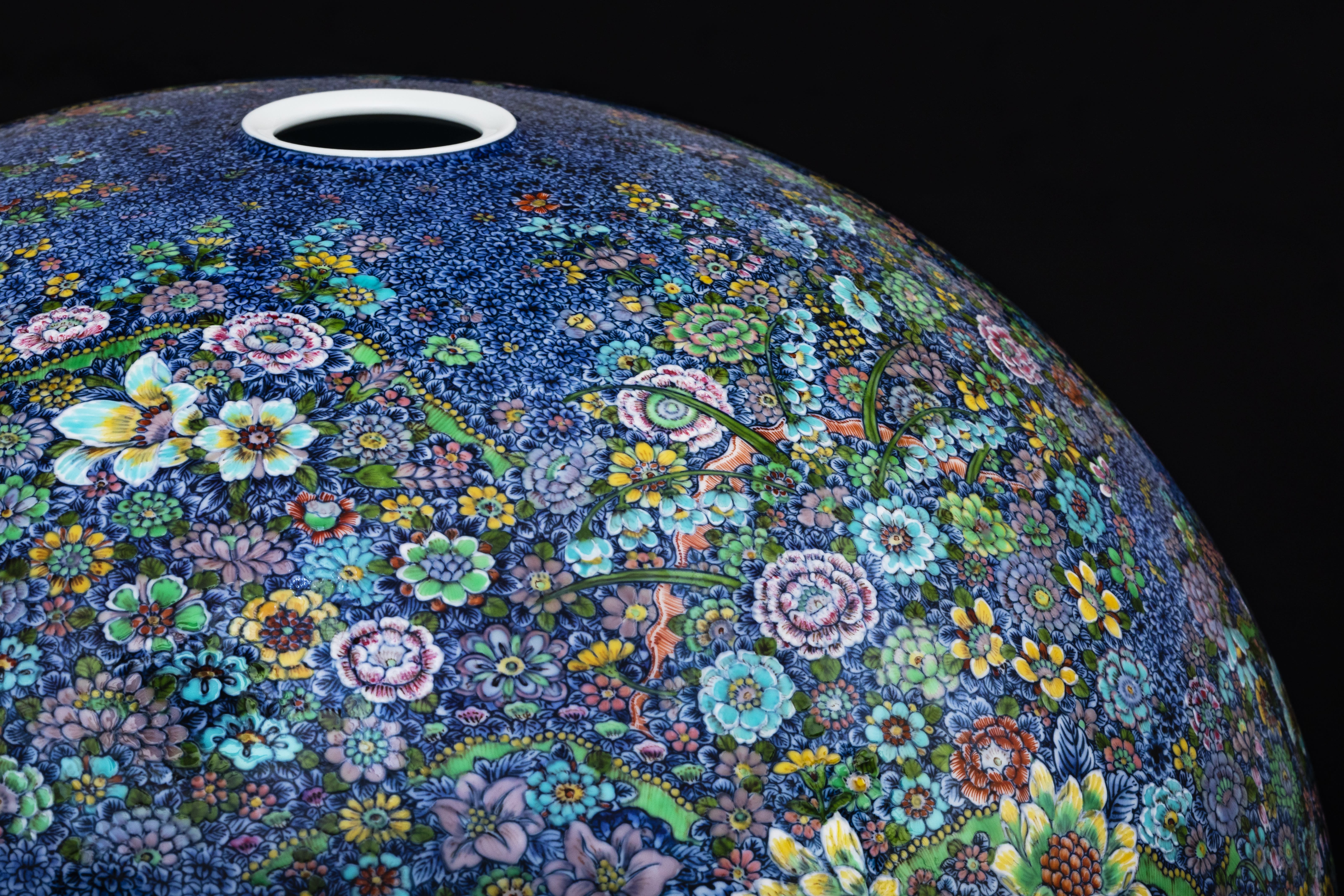
-

-

-
Porcelain Stories I Garden of Dreams
Shoko Aono Ippodo GalleryA surface completely covered in flowers; Yuki Hayama's Offering Bowl with Ten Thousand Flowers is like a radiant dream. The form of the offering bowl suggests a sense of openness and vulnerability, one that can be filled with prayer and love. With colors of blue, pink, and yellow overlapping ornately, the bowl is like a garden with countless blooming flowers; one can almost smell the perfume of their petals. Stories tell of our ancestors, offering flowers to the deceased nearly sixty thousand years ago; however, these flowers wilt and change with the seasons, with time their fragrant petals and lush colors fade away. Yuki Hayama creates a flower that never wilts, a garden that remains vibrant forever, a memento that has been dedicated to heaven.
Yuki Hayama was born in Arita, Japan, in 1961. Arita was where Japan's porcelain industry originated and during the summer, he would play in shallow mountain rivers and find that the riverbeds were filled with sherds. They had been washed by rushing waters for decades, even centuries, rounding their forms while preserving their designs. The sherds had blue designs that stood out clearly.
From the age of fifteen, he began working on a potter's wheel and practicing his painting technique. He questioned why and for whose sake he drew these designs, and this became the source of his creativity. Although his work may become fragments in the future, alike the sherds washed up in the riverbeds, he wants to continue to create beauty that will shine for eternity. Through illustrating stories and living patterns, he shines a light on lives of the ones he loves. His dedication and enthusiasm allowing him to create transcendental, divine porcelain pieces. Hayama uses only five colored glazes, firing his works twelve rimes and giving birth to seventy-two different tones, producing unique gold lines, and embraces yet challenges the five-thousand-year-old traditions of colored ceramics.
Hayama says that the past is the reference that can be used to speculate on the future, leading him to study history and the classics avidly. He says that, while the invention of pottery marked the awakening of civilization, patterns are the signal of an awakened consciousness, and he interprets the wisdom and signposts of the patterns, as if reading unknown codes. Hayama, originally aspired to become a writer and this passion is reflected in his designs. He illustrates stories based on the lives of people who appear in myths and legends passed down over thousands of years. He wields a compass, one that guides him into the future and gives birth to his designs. Having practiced designs on paper more than ten thousand times, his hands are masterful, and he is able to draw directly onto the porcelain. His brilliant control of the brush allows him to overlap multiple lines within the space of a single millimeter, applying the cobalt colorant without hesitation. The result is a paean of praise to all living things, representing the counrless rears of humanity and the adoration of mother Earth from which all life springs.
His second exhibition in New York will feature the aloof, yet courageous 'Goddess of the Moon' and consist mainly of a collection of smaller works, including a rare memorial box and a gorgeous apothecary bottle. Held in the palm of the hand, Hayama's works come to life. The imagery invites us to dance and the image of someone close to us springs into mind and the beauty of the thought overflows. It is through sharing the joy and beauty of Hayama's porcelain stories which allows us to inspire generations to come.
-

H3 x W16 1/8 in, H7.6 x W41 cm
-

H4 5/8 x W24 ¾ x D5 5/8 in, H11.6 x W63 x D14.2 cm
-

H13 1/8 x W15 1/4 in
H33.3 x W38.7 cm -

H11 6/8 x W13 ¼ in,
H29.8 x W33.5 cm -

H14 3/4 x W15 3/8 in
H37.3 x W39.1 cm -

H17 1/8 x W48 5/8 in
H43.6 x W123.6 cm -

H5 3/8 x W3 3/4 in
H13.5 x W9.3 cm -

H5 x W3 ¼ in,
H12.8 x W8.3 cm -

H4 1/4 x W3 in
H10.8 x W7.5 cm -

H6 1/2 x W3 3/8 in
H16.6 x W8.5 cm -

H4 5/8 x W3 ½ in
H11.6 x W8.8 cm -

H4 3/8 x W4 3/8 in,
H11.2 x W11.2 cm -

H4 5/8 x W4 3/8 in
H11.8 x W11.2 cm -

H7 5/8 x W2 1/2 in
H19.4 x W6.5 cm -

H7 3/4 x W2 5/8 in
H19.5 x W6.7 cm -

H5 1/4 x W2 1/2 in
H13.5 x W6.2 cm -

H2 1/8 x W4 1/4 x D2 1/4 in
H5.2 x W10.7 x D5.7 cm -

H2 1/8 x W3 5/8 in
H5.3 x W9.2 cm -

H2 1/8 x W3 5/8 in
H5.2 x W9.1 cm -

H1 3/4 x W5 1/2 x D2 in
H4.6 x W13.9 x D5 cm -

H1 ⅛ x W3 ¼ in,
H2.9 x W8.3 cm -

H1 1/8 x W3 1/4 in
H2.9 x W8.4 cm -

H2 1/8 x W4 1/8 x D2 1/4 in
H5.1 x W10.5 x D5.7 cm -

H2 1/2 x W2 1/2 in
H6.3 x W6.4 cm








